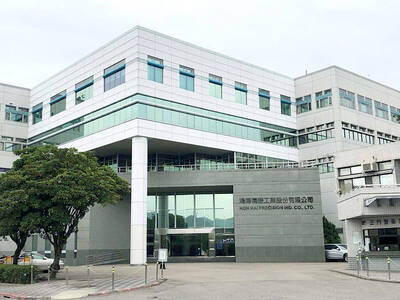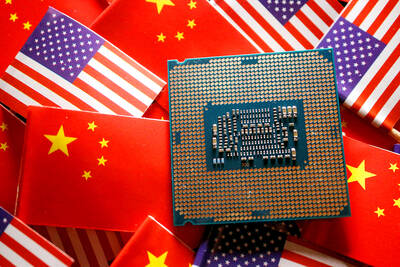The average mortality rate fell 30 percent since 2002, which could lead to cuts in premiums of traditional life insurance policies, according to the Financial Supervisory Commission’s (FSC) latest life table released on Thursday.
A life table shows for each age the probability that a person would die before their next birthday. It is used by life insurers to assess the risks of providing products to consumers at particular ages.
The commission last updated its life table in 2002.
It was time to revise the table given improvements in public health, medications and treatment, Insurance Bureau Deputy Director-General Wang Li-hui (王麗惠) told a news conference in New Taipei City.
The creation of a life table is based on actuarial science and data collected by local life insurance companies, Wang said.
Overall, Taiwanese’s average mortality rate fell 30 percent from the previous life table, while the degree of reduction varies by age group, she said.
The mortality rate for a one-year-old declined the most among all age groups, falling 50 percent to 1.89 basis points for boys and 52 percent to 1.45 basis points for girls.
For male adults, the mortality rate of those aged 25 to 35 fell to a range of 4.96 basis points to 9.77 basis points, compared with a range of 8.21 basis points to 15.32 basis points.
For female adults, the death rate of those aged older than 75 dropped to 1.63 percentage points, compared with 2.42 percentage points.
The updated life table takes effect on July 1, and would affect life insurance premiums to be sold after that date, Wang said.
The life table affects the liability reserve interest rates, which insurers use to evaluate liabilities at market value on all life insurance policies, while the decrease in mortality rates would lead to lower premiums of traditional life insurance policies, she said.
“Consumers could expect a reduction as high as 30 percent in premiums of new protection type insurance policies that are not linked with investment plans,” Wang said.

Shares in Taiwan closed at a new high yesterday, the first trading day of the new year, as contract chipmaker Taiwan Semiconductor Manufacturing Co (TSMC, 台積電) continued to break records amid an artificial intelligence (AI) boom, dealers said. The TAIEX closed up 386.21 points, or 1.33 percent, at 29,349.81, with turnover totaling NT$648.844 billion (US$20.65 billion). “Judging from a stronger Taiwan dollar against the US dollar, I think foreign institutional investors returned from the holidays and brought funds into the local market,” Concord Securities Co (康和證券) analyst Kerry Huang (黃志祺) said. “Foreign investors just rebuilt their positions with TSMC as their top target,

REVENUE PERFORMANCE: Cloud and network products, and electronic components saw strong increases, while smart consumer electronics and computing products fell Hon Hai Precision Industry Co (鴻海精密) yesterday posted 26.51 percent quarterly growth in revenue for last quarter to NT$2.6 trillion (US$82.44 billion), the strongest on record for the period and above expectations, but the company forecast a slight revenue dip this quarter due to seasonal factors. On an annual basis, revenue last quarter grew 22.07 percent, the company said. Analysts on average estimated about NT$2.4 trillion increase. Hon Hai, which assembles servers for Nvidia Corp and iPhones for Apple Inc, is expanding its capacity in the US, adding artificial intelligence (AI) server production in Wisconsin and Texas, where it operates established campuses. This

US President Donald Trump on Friday blocked US photonics firm HieFo Corp’s US$3 million acquisition of assets in New Jersey-based aerospace and defense specialist Emcore Corp, citing national security and China-related concerns. In an order released by the White House, Trump said HieFo was “controlled by a citizen of the People’s Republic of China” and that its 2024 acquisition of Emcore’s businesses led the US president to believe that it might “take action that threatens to impair the national security of the United States.” The order did not name the person or detail Trump’s concerns. “The Transaction is hereby prohibited,”

Garment maker Makalot Industrial Co (聚陽) yesterday reported lower-than-expected fourth-quarter revenue of NT$7.93 billion (US$251.44 million), down 9.48 percent from NT$8.76 billion a year earlier. On a quarterly basis, revenue fell 10.83 percent from NT$8.89 billion, company data showed. The figure was also lower than market expectations of NT$8.05 billion, according to data compiled by Yuanta Securities Investment and Consulting Co (元大投顧), which had projected NT$8.22 billion. Makalot’s revenue this quarter would likely increase by a mid-teens percentage as the industry is entering its high season, Yuanta said. Overall, Makalot’s revenue last year totaled NT$34.43 billion, down 3.08 percent from its record NT$35.52